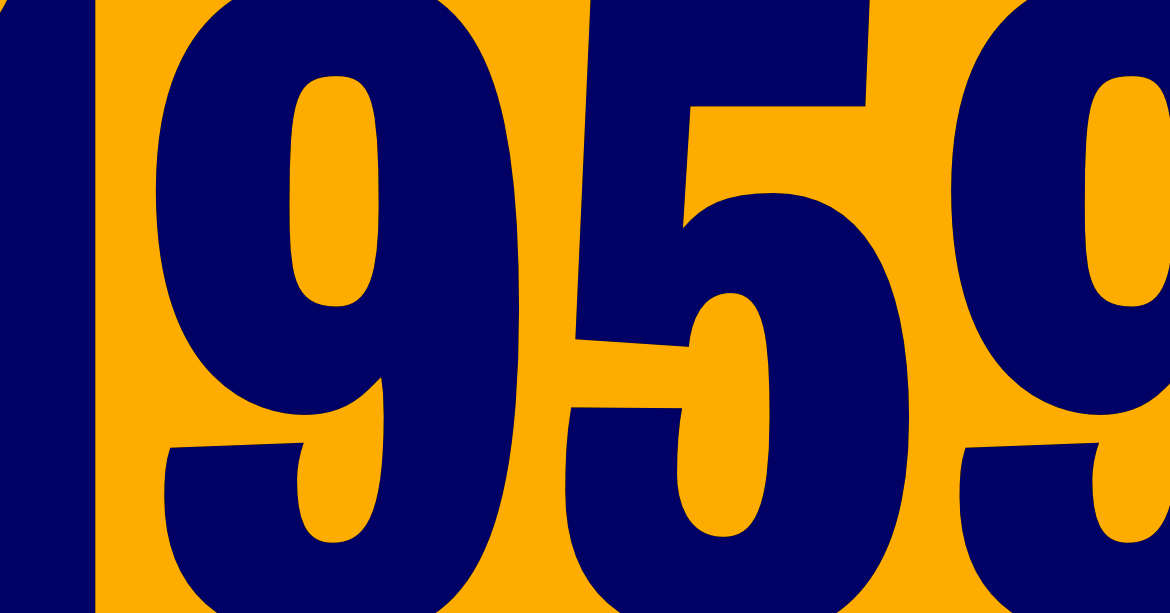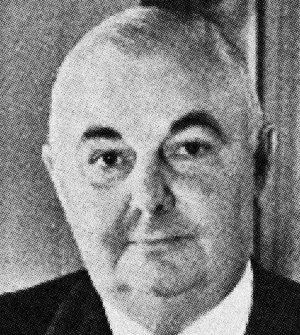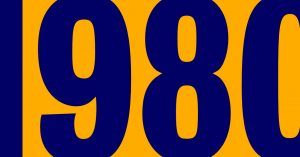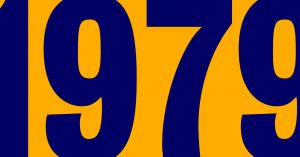ATV financial results: 1959
Prince Littler on Associated Television Limited’s 1959 results

YEAR OF CONTINUED PROGRESS AND EXPANSION
OVER TWENTY-FOUR MILLION VIEWERS ON I.T.V.
SIGNIFICANT WIDENING OF PROGRAMME RANGE
MR. PRINCE LITTLER’S REVIEW OF ACTIVITIES
The fourth annual general meeting of Associated Television Limited will be held at the Connaught Rooms, Great Queen Street, London, W.C.2., on Thursday, September 3rd, 1959, at 3 p.m.
The following is the statement by the chairman, Mr. Prince Littler, C.B.E. which has been circulated with the report and accounts:–
The year under review has shown continued progress and expansion both for your Company and for Independent Television as a whole. New programme companies have been appointed for southern and north-eastern England, and the number of viewers able to receive Independent Television has risen to a total of more than 24 millions. Apart from the natural growth of the television audience through the purchase of new receivers, an entirely new Independent Television audience will arise from the opening of three new transmitters which will be on the air by the end of the year, thereby bringing Independent Television to an additional four million viewers in East Anglia. Northern Ireland and south-eastern England. All Independent Television companies, the pioneer companies as well as the newcomers, benefit from this expansion because network arrangements between the various companies enable basic production costs to be spread.
Planned Expenditure by Advertisers
With the nation-wide growth of Independent Television, advertisers are now able to be more selective in their buying of time, and the industry is entering into a new phase of overall planned expenditure on the part of the advertisers and their agencies. This is a thoroughly healthy development and it is supported by increased budgets which amply demonstrate the faith that advertisers have in the television medium.
While advertising revenue increased in the period under review as against the previous year, it must be recognized that saturation point may soon be reached. On the other hand programme costs continue to rise, both as a result of our confirmed policy of improving programme standards and as a result of wage increases arising from negotiations with the various trade unions concerned in the industry. Continuous watch is kept on expenditure and, although various substantial economies have been effected, the present extremely high level of profitability may become increasingly difficult to maintain.
Transdiffusion analysis
The financial portions of annual reports are always dry and, to 90% of the population, impenetrable. By the 1970s, ATV would get round this by publishing their annual report in two parts – one with all the balances and shareholder funds and dividend information than you can handily pop in the bin, and one full of pictures of the programmes and films and exciting bits that you can actually read.
But the financial part is worth looking into, especially this early into the life of the company.
One of the things we can divine here is that the company is now pretty well debt free. With all the cash coming in the door, it has made sense to pay off the mortgage on Elstree over a year early and take the financial penalty. The company’s loan stock – a way for shareholders to lend money to the business – has been bought back, with a tidy profit to those (Pye Group, notably) who bought it. They’ve also made sure that there’s no future way for creditors to call on the company by converting ATV’s piles of cash into shares. These are attractively priced and thus are very tempting to investors.
What isn’t made clear here is that these new shares are non-voting shares. Sure, you’ll own a slice of ATV, but you’ll get no say in the company beyond perhaps been called on to speak at the Annual General Meeting if you’re insistent enough. But the power remains with a selected group of original investors – and one of them in particular. Mr Lew Grade bet the farm on ATV and holds a large slice of the voting stock. The conversions in this report remove the voting powers of a number of early investors, but Lew isn’t one of them.
Capital Structure
In the past 12 months there have been considerable changes in the capital structure of your Company. On September 30, 1958, the remaining £207,120 [£3.9m in today’s money allowing for inflation – Ed] of the 6 per cent. Convertible Unsecured Loan stock, 1960/63, was converted into “A” Ordinary shares of £1 each, but with a reduced right to dividends in respect of the year ended April 30, 1959, and the Company’s 6 per cent. Unsecured Loan stock, 1960/63, was redeemed at 102½ per cent.
On December 11, 1958, the authorized capital of the Company was increased to £5,000,000 [£94m] by the creation of 2,980,000 additional “A” Ordinary shares of £1 each, and 305,000 new “A” Ordinary shares of £1 each were issued credited as fully paid by way of capitalization of reserves and distributed to the holders of the Deferred shares and the 400,000 Deferred shares of 1s. each were converted into 20,000 “A” Ordinary shares of £1 each. On the same date each of the Company’s 4,850,000 “A” Ordinary shares of £1 was sub-divided into four “A” Ordinary shares of 5s. each.
On March 19, 1959, 7,871,520 fully paid “A” Ordinary shares of 5s. each numbered 1 to 7,871,520 inclusive were converted into stock transferable in amounts and multiples of 5s. The 828,480 “A” Ordinary shares of 5s. each, arising from the conversion of the Loan stock on September 30, 1958, will be converted into stock after the payment of the final dividend in respect of file year ended
April 30, 1959, at which time these shares will rank pari passu with the remaining “A” Ordinary stock.
Group Profit and Dividend
The Group profit before taxation, for the year ended April 30, 1959, amounted to £5,316,493 [£100m]. Taxation takes £2,715,076 [£51.2m] and there remains a Group profit of £2,601,417 [£49m], of which £369 [£7,000] is attributable to outside shareholders of a subsidiary company, leaving a profit attributable to the parent company of £2,601,048. Of this amount £38,373 [£724,000] was retained by the subsidiary companies and there remains £2,562,675 [£48.3m] to be dealt with in the accounts of the parent company. To this must be added £333,040 [£6.3m], the balance brought forward from the previous year, and £153,123 [£2.9m] in respect of taxation provisions no longer required due to the reduction in the rate of income tax, producing a balance of £3,048,838 [£57.5m] available for appropriation.
Your directors propose to recommend a final dividend of 12s. per share on the Ordinary shares of £1 each and 3s. per share on the “A” Ordinary stock units of 5s. each. “A” Ordinary shares numbered 7,871,521 to 8,700.000 inclusive rank for dividend of ⁷⁄₁₂ths of that payable on the “A” Ordinary stock. The interim dividend already paid and the proposed final dividend absorb £1,337,623 [£25.2m], leaving £1,711,215 [£32.3m] to be carried forward in the accounts of the parent company.
The accounts include provision for the distribution of £213,897 [£4m] for the staff profit-sharing scheme.
The balance of the mortgage on National Studios was repaid in September, 1958.
Proposed Capitalization of Reserves
On February 5, 1959, your Company applied to the London Stock Exchange for a quotation of its “A” Ordinary share capital which was granted. In the statement submitted with the application your directors indicated their intention of recommending in December, 1959, the capitalization of £2,325,000 [£43.9m] of reserves by the issue of 9,300,000 “A” Ordinary shares of 5s. each credited as fully paid to the holders of the present issued share capital in the proportions of four new shares for each existing Ordinary share of £1 each and for every four existing “A” Ordinary stock units of 5s. each. It is still their intention to make this recommendation.
Last year you were notified of the acquisition at par by your Company of £500,000 [£9.4m] 7 per cent. Convertible Unsecured Loan stock, 1967/68, in British Relay Wireless and Television Limited under the terms of issue of which the Company has options, exercisable on September 30, 1961, or September 30, 1962, to convert the whole or part of the stock into fully paid Ordinary shares of 5s. at the rate of 134 shares for each £100 stock converted. In February, 1959, British Relay Wireless and Television Limited made a rights issue and your Company subscribed for 268,000 new Ordinary shares of 5s. at 20s. which was its entitlement under the terms of the Loan Stock Trust Deed. The operations of British Relay Wireless and Television Limited continue to expand and your board is confident that this investment will prove profitable.
Recent and Proposed Acquisitions
In September, 1958, your Company received the consent of the Australian Federal Government to the acquisition of file commercial radio and television interests of the Daily Mirror Group in Australia. In March, 1959, the wholly owned Australian holding company, formed by your Company to control its Australian interests, subscribed for 75,000 shares of £A.1 each in the company operating the new Brisbane commercial television station.
It is anticipated that this station will go on the air in August, 1959. The Sydney commercial television station in which your company has a 9.36 per cent interest, is now operating on increasingly profitable terms.
As I reported in my statement last year, your board was then negotiating for file acquisition of a prominent United Kingdom production company engaged in the production of films for television. These negotiations were successfully concluded last autumn when the share capital of Incorporated Television Programme Company Limited, which has since changed its name to ITC—Incorporated Television Company Limited, was acquired. This company owns a 50 per cent interest in the voting equity of one of the three most important television film distribution companies in the United States. Preparatory work for the production of television film series is in hand and will be carried out in your Company’s studios in the United Kingdom and also in its studios in Australia.
Agreement with Pye Records
As indicated in the statement accompanying the application for quotation to the London Stock Exchange, your Company has completed an agreement to buy for a nominal consideration, half of the issued share capital of Pye Records Limited, a gramophone record manufacturing company, and has undertaken to advance to Pye Records Limited up to £300,000 [£5.7m] by way of loan. Although it is anticipated that certain initial losses will be incurred, your directors are confident that this will prove a profitable venture.
The Company has also concluded its negotiations with Muzak Corporation. Subsidiary companies have now been formed to operate the concession acquired on a royalty basis in the United Kingdom and Ireland for the distribution of background music on the lines developed by Muzak Corporation in North America.
Preparatory development work is now in hand and a sales force is being built up to develop this franchise commencing in August of this year. An encouraging number of inquiries for the use of this service has been received and it is hoped that there will be a steady growth in demand once the operation is established.
New Head Office and Studios
The first stage of the transfer of the Company’s head office to its new office building at ATV House, 17, Great Cumberland Place, W.1, was.completed on June 29, 1959, and it is anticipated that the transfer of the second stage will be completed in the spring of 1960. These offices are among the most modem and efficiently planned in London and your Company has been able to set an example in providing such agreeable working conditions for its staff. The amenities include a Muzak service throughout the building.
Plans are currently under review for the Company’s permanent studios. From the outset the staff has been working under considerable difficulties in temporary accommodation converted to television production purposes and it is remarkable that programmes of such excellence should have been produced in the existing studios. The consolidation of the London production facilities has been consistently postponed until the Company’s financial position warranted the considerable expenditure involved. Plans have already been approved for the rebuilding of the Midlands centre, Alpha Studios, which are shared and jointly financed by ABC Television and ourselves.
Distinguished Artists and Public Figures
The range of ATV’s programming has significantly widened. During the past year not only have such distinguished artists as Sir Laurence Olivier, Sir John Gielgud and, more recently. Sir Michael Redgrave and Miss Leslie Caron, made their world debuts in major TV drama, but a succession of public figures, politicians, philosophers, scientists, educationalists, and the clergy of the main denominations, have all appeared in ATV’s various topical series. Thus, in “Right to Reply,” the speakers have included the late John Foster Dulles, the Right Hon. Selwyn Lloyd, Secretary for Foreign Affairs, Lord Russell, General Norstad, M. Soustelle and Mr. Aneurin Bevan. In “Free Speech,” Lord Boothby, Mr. Michael Foot, Mr. A. J. P. Taylor, Mr. W. J. Brown, to name four of the regular debaters, have kept the conduct of current controversy not merely balanced but also bold. Sir Kenneth Clark’s series “Is Art Necessary?” has now reached its eleventh programme and, in the field of documentary studies, ATV’s treatment of such subjects as Polio and World Population have achieved audiences in excess of five and a half million. The Religious programmes, moreover, have grown in audience from an average of under three million in 1958 to an average of nearly four and a half million in 1959. Among the many outstanding religious figures who have taken part in the “About Religion” series are the Reverend Father Trevor Huddleston, the Most Reverend Archbishop of Liverpool, Dr. John C. Heenan, and, more recently. Dr. Billy Graham, the American evangelist.
Popular science has been most successfully presented by Mr. Gerald Leach, a 26-year-old Cambridge scientist, who, in the series “It Can Happen Tomorrow” now addresses the largest home schoolroom audience of children and adults in British television.
A Notable Outside Broadcast
Notable among the many outside broadcasts was the first coverage in Independent Television of polo, with H.R.H. the Duke of Edinburgh playing at Windsor Great Park. Not less notable in another context is “Emergency – Ward 10” which has now entered its third year of twice-weekly series, with more than 10 million viewers for each episode.
Undoubtedly, however, the outstanding ATV record belongs to “Sunday Night at the London Palladium,” which on March 29, 1959, celebrated its 139th performance, having appeared no less than 130 times among the Top Ten most popular programmes in this country. “Sunday Night at the London Palladium” has brought into the homes of nearly 12 million viewers the best in light entertainment and, together with “Saturday Spectacular” has presented such internationally famous stars as Arthur Askey, Max Bygraves, Margot Fonteyn, Bruce Forsyth, Benny Hill, Bob Hope, Sally Ann Howes, Jewell and Warriss, Dave King, Liberace, Johnny Ray, Harry Secombe, Jo Stafford, Sophie Tucker and Norman Wisdom.
Recognizing the importance of maintaining the highest standards in children’s programmes your Company, in association with ABC Television, has appointed Miss Mary Field as Childrens Adviser. The work that Miss Field has already done as chairman of the Children’s Film Foundation earned her unique authority in this field.
The Midlands
Your Company is unique among the main Programme Companies in having responsibility not only for week-end broadcasting in the Metropolis but also for providing the week-day Independent Television for some six million inhabitants in the Midlands. In this important Midlands operation not only do we broadcast regular programmes for the farming community but, in the series “Where Are You Going?’ the Midland teenagers are helped by Midland educationalists and by the large industrial organizations in arriving at the right choice of career. The Midlands programmes include the popular “Lunch Box” programme of Noele Gordon’s and many programmes not seen on the London screens. The latter include the daily “Midlands News”; “Midland Montage,” the weekly magazine-type programme which presents news, views and comment about the Midland scene; daily religious programmes; “Paper Talk,” the regular discussion programme which had the longest run of any weekly television senes in Britain; and “Cover Girl,” a new type of teenage show produced in ATV’s Midland studios.
Your Company has continued with its policy of publishing in pamphlet and booklet form various of its outstanding television programmes. Particularly notable is the fact that by adopting new techniques we were able to place the text of the broadcasts of Mr. Dulles. Mr. Selwyn Lloyd, General Norstad and M. Soustelle in the hands of Members of the House of Lords, M.P.s and newspaper editors on the morning following the broadcast.
Your Company during the past year contributed £26,000 [£491,000] out of the total of £100,000 [£1.9m] from the four main companies by way of grants to the arts and sciences. Sir Ivone Kirkpatrick, chairman of the Independent Television Authority, said of these grants: “The money will rescue many a valuable enterprise from extinction and will help others to improve their standards.”
Competition Welcomed
In my last statement I referred to the fact that this Company would welcome competition by another Independent Company seeking to attract viewers on the same days of the week and in the same areas. I reaffirm this view. Indeed, I feel that the competitive requirements of the Act call for such a second service. Moreover, your Company feels that the present restrictions on broadcasting hours are unrealistic and should be reviewed. The Company is at the moment precluded, solely by lack of opportunity, from scheduling many new programmes which it would like to be able to present to the British public. Furthermore, your Company has always been in the forefront of those which have supported the view that British television should progressively adopt the 625-line Continental standard and should not be permanently shackled to the outmoded standard of 405-lines to which this country reverted after the close of World War II.
The problems confronting any Programme Company are many and various and, once again, I should express our sincere appreciation for the invaluable guidance and advice always made readily available to us by Sir Ivone Kirkpatrick himself and by his two chief officers, the Director-General, Sir Robert Fraser, and the Deputy Director-General, Mr. Bernard Sendall.
The thanks of this Company, as of the other Independent Television Companies, are due also to Mr. Paul Adorian, managing director of Associated-Rediffusion, who for the past year has acted as chairman of the Independent Television Companies Association, an office in which he has from July 1 been succeeded by Mr. Norman Collins, deputy chairman of your own Company.
I have to report the resignation as executive director of Mr. Richard L. Meyer, whose wide experience of sound broadcasting matters proved so valuable to the Company during its initial stages. Mr. Meyer has been succeeded as an executive director by Mr. J. A. L. Drummond, whose City background and knowledge of financial matters has already proved of the greatest possible benefit to the board.
Tribute to Management
It is customary for the chairman to pay a tribute to the services rendered by the management. This I am most happy to do. I would like to thank all the directors, not least the non-executive directors, who have so generously given of their time and services.
No tribute to management would, however, be complete without a specific reference to the unique services rendered by your Company’s managing director, Mr. Val Parnell, thanks to whom the Company has not only become highly profitable but has laid sound foundations for the future. Moreover, Mr. Parnell, no less than I, would, I am sure, wish to include a special mention of your deputy managing director. Mr. Lew Grade, on whose shoulders fall so much of the detail of the day to day running of the business.
In conclusion, as regards the staff of your own Company, it will be apparent that such excellent results could not have been achieved without arduous and unflagging efforts on the part of all concerned. I therefore extend to them our heartiest thanks, and I am glad that the staff profit-sharing scheme enables our appreciation to take a tangible form.
About the author
As a public company with shareholders, ATV was required to publish a detailed Annual Report at the end of each financial year. It was common to also publish a Chairman's Statement, summing up the report in more readable language.





